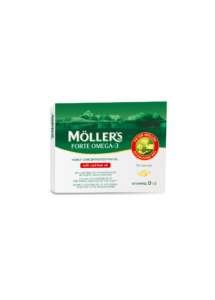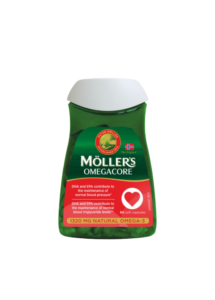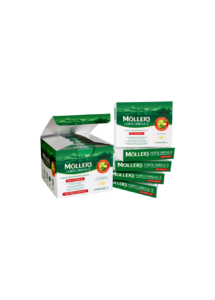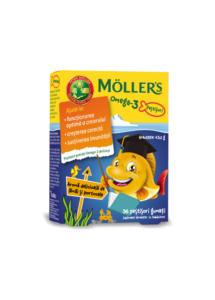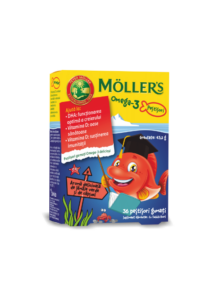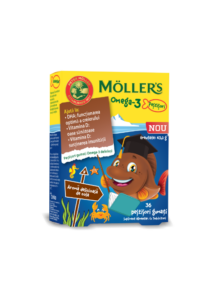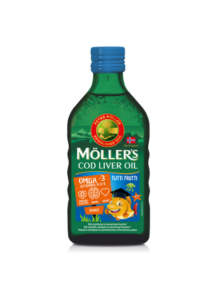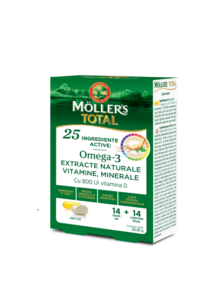Svi znamo dobrobiti omega-3. Ali što je s dnevnom dozom ulja jetre bakalara? Ili je to omega-3? I je li ulje jetre bakalara i riblje ulje isto? Budući da se ova tri pojma koriste naizmjenično, nije ni čudo da smo zbunjeni. Ali nisu sve iste stvari.
Home » Ulje jetre bakalara, riblje ulje, omega-3 – u čemu je razlika?
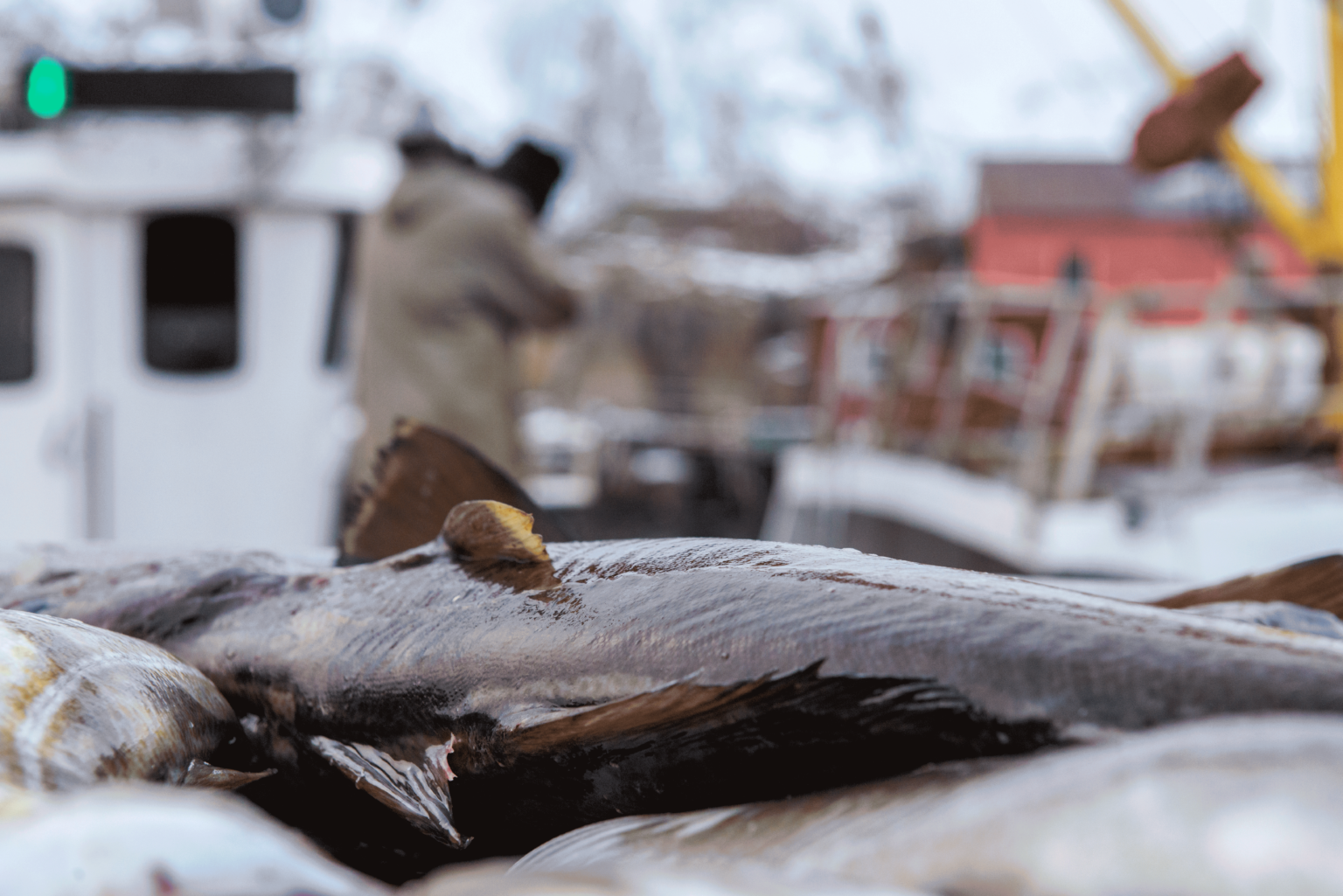
Omega-3 je naziv za skupinu višestruko nezasićenih masnih kiselina. Ulje jetre bakalara i riblje ulje nazivi su dva različita riblja proizvoda. Ulje jetre bakalara dobiva se iz jetre bakalara, a riblje ulje iz cijele ribe.
I ulje jetre bakalara i riblje ulje prirodno su bogati omega-3 masnim kiselinama. Möller’s kapsule sadrže riblje ulje iz inćuna i sardina koje je dodatno koncentrirano te stoga sadrži više omega-3 nego što je prirodno. Möller’s Cod Liver Oil je čisto ulje jetre bakalara iz
Ulje jetre bakalara i riblje ulje sadrže EPA i DHA
Omega-3 masna kiselina, alfa lipoična kiselina (ALA) nalazi se u mnogim biljnim izvorima, ali samo morski izvori sadrže dugolančane omega-3 masne kiseline eikozapentaensku (EPA) i dokozaheksaensku (DHA). Istraživanja pokazuju da bismo trebali jesti više morskih dugolančanih omega-3 masnih kiselina jer dokazano blagotvorno djeluju na normalne funkcije mozga, srca i vida.
Proizvodi li tijelo omega-3?
Da i ne. Masna kiselina DHA prisutna je u mnogim staničnim membranama kod ljudi iu većim je koncentracijama u nekim organima nego u drugima. Tijelo može pretvoriti ALA (biljne omega-3) u EPA i DHA, ali ti procesi nisu vrlo učinkoviti. Upravo mikroalge u moru tvore dugolančane EPA i DHA masne kiseline. Ove masne kiseline se kreću prema gore u hranidbenom lancu kako manje ribe jedu mikroalge, veće ribe jedu manje ribe, i tako dalje. Za ljude, izvori ovih masnih kiselina često su veće morske omega-3 masne ribe kao što su losos, skuša, haringa i ulje jetre bakalara dobiveno iz jetre bakalara.
Ulje jetre bakalara i riblje ulje kao dodaci omega-3 masnim kiselinama
Dodane omega-3 masne kiseline kroz prehranu i dodatke kao što su Möllerovo ulje jetre bakalara i Möllerovi dodaci prehrani važni su za osiguranje odgovarajućeg unosa dugolančanih omega-3 masnih kiselina u tijelo. Omega-3 biljnog podrijetla dobivamo putem uobičajenih namirnica kao što su biljna ulja, žitarice i neke vrste orašastih plodova.
Koliko omega-3 ima u ulju jetre bakalara?
Razlog zašto se ulje jetre bakalara i omega-3 često spominju u istoj rečenici je taj što je ulje jetre bakalara najbolji dostupni izvor morskih omega-3. To ne znači da su drugi izvori inferiorni ili da su masne kiseline koje sadrže lošije kvalitete. To samo znači da ulje jetre bakalara ima veći sadržaj ovih masnih kiselina po mjernoj jedinici. Žličica Möllerovog ulja jetre bakalara (5 ml) sadrži čak 1,2 grama omega-3 masnih kiselina, od čega na DHA otpada 0,6 grama, a na EPA 0,4 grama.
What is good health?
Do you have a good lifestyle?
Lifestyle simply means the way in which you live. Health and lifestyle go hand in hand. You might feel you have a good lifestyle if you are physically active, eat healthily and generally experience a sense of wellbeing. Conversely, if you want good health you should also have a good lifestyle.
Physical activity is the major contributor to a good lifestyle, but diet, drugs, stress, sleep and social conditions are also play an important role. Being able to use the body properly to avoid injury also affects lifestyle. Physical activity can also prevent depression and help you to recover more quickly from mental illness, both of which obviously affect your lifestyle.
Diet can be a difficult topic for many. Perhaps you eat too much or too little or maybe you find it hard to know what foods to combine to have a balanced diet. It’s also important to eat food that contains important vitamins, minerals and dietary fibre, omega-3 and antioxidants. On top of all this, you also need to get enough energy, protein and the correct fatty acids. The requirement for these nutrients changes throughout your life. When you are older you also have different requirements than children and younger adults. Women also have different requirements than men. Pregnant and breastfeeding mothers also have special requirements.
When you get older, you lose muscle mass and your body requires less energy and therefore less food. You may lead a less active life than you did before, which is why you require less food. However, your need for minerals, vitamins and other nutrients remains the same. Of course, there are plenty of healthy and active older people, but when you reach 70 to 80 years of age, it’s easier to become ill, especially during flu season.
Some steps you can take to improve your lifestyle and health are to:
- eat a healthy and varied diet
- stay active
- watch your weight
- avoid too much alcohol and don’t smoke
- get enough sleep
- think positive
- practise good hygiene
What is good quality of life?
The World Health Organisation (WHO) defines quality of life as a state where the individual can realise their potential, cope with normal stressful situations, work in a rewarding and positive way, and be able to contribute to others and society.
Quality of life is a wide and somewhat diffuse concept that includes joy in, and a desire for, life. These are values that are rather felt than measured, which in turn are based on personal environment and choices. Quality of life doesn’t necessarily depend on being healthy or sick. It’s the moments between worries, sorrows, problems and ailments that matter. For example, if you have a chronic illness, a feeling of mastery can be important when talking about quality of life.
To sum up, quality of life is a combination of health, lifestyle, networks and social support. It’s about experiencing joy, meaning in life, satisfaction, security and a sense of belonging, as well as being able to use your strengths. It’s also about feeling interest in life, coping with everyday situations and a being committed to something or someone. If you have good quality of life, you will be able to cope better with the inevitable stressful situations in life.
Naši proizvodi
-
MÖLLER'S FORTE OMEGA 30 kapsule
-
MÖLLER'S OMEGACORE
-
MÖLLER'S FORTE OMEGA 150 kapsule
-
MÖLLER'S OMEGA 3 RIBICE s okusom NARANČE I LIMUNA
-
MÖLLER'S OMEGA 3 RIBICE s okusom JAGODE
-
MÖLLER'S OMEGA 3 RIBICE s okusom COLE
-
MÖLLER'S OMEGA 3 ULJE JETRE BAKALARA s okusom TUTTI FRUTTI
-
MÖLLER'S OMEGA 3 ULJE JETRE BAKALARA s okusom LIMUNA
-
MÖLLER'S TOTAL
Saznajte više
Program vježbanja za starije osobe
ZDRAVE KOSTI ZDRAVO STARENJE
Zdrava prehrana tijekom trudnoće
MOZAK ZDRAVO STARENJE
Dobro zdravlje, način života i kvaliteta života – što sve to znači?
BAKALAR ZDRAVO STARENJE
Pronađite inspiraciju na našem Instagramu
This error message is only visible to WordPress admins
Error: Access Token is not valid or has expired. Feed will not update.
